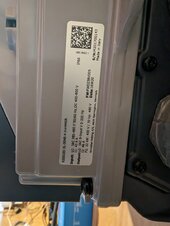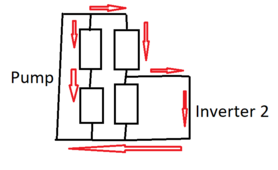sparkydarts
New Member
I've got a string a 14 modules in series to run a vfd for a well pump. There is specifically 14 modules in series to have the correct operating voltage for the vfd.
Problem: The dc well pump is hardly used and I hate to have all that solar just sitting there most of the day.
What I'd like: To be able to use the same solar modules to power an off grid system.
Other Problem: My voltage from the string of 14 is too high for any off grid inverters I'd like to use.
Proposed solution: I tap a line between the 7th and 8th Modules to also have 2 strings of 7 modules?
Existing String 1: Modules 1-14
New String 1: Modules 1-7
New String 2: Modules 8-14
In theory the new strings should have half the voltage of the Existing String, thus now in the voltage range for the off grid inverter.
Any reason this wouldnt work?
Problem: The dc well pump is hardly used and I hate to have all that solar just sitting there most of the day.
What I'd like: To be able to use the same solar modules to power an off grid system.
Other Problem: My voltage from the string of 14 is too high for any off grid inverters I'd like to use.
Proposed solution: I tap a line between the 7th and 8th Modules to also have 2 strings of 7 modules?
Existing String 1: Modules 1-14
New String 1: Modules 1-7
New String 2: Modules 8-14
In theory the new strings should have half the voltage of the Existing String, thus now in the voltage range for the off grid inverter.
Any reason this wouldnt work?





